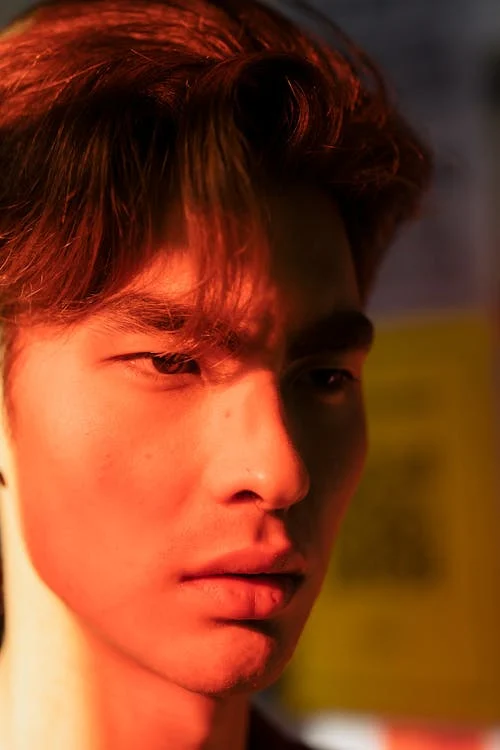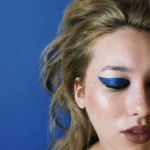When you think of the mullet, images of 80s rock stars might come to mind. But did you know the mullet has made a stylish comeback, especially in Asia? From South Korea to Japan, the Asian mullet has evolved into various trendy styles that are both versatile and unique. Let’s dive into the world of Asian mullet hairstyles and explore the different variations that are turning heads everywhere.
The Classic Short Mullet
The classic short mullet is all about keeping things simple yet stylish. With shorter hair on the sides and longer hair at the back, it’s a low-maintenance look that’s perfect for those who want an edgy but clean style.
Murakami Hiro, a renowned hairstylist at TONI&GUY Japan, says, “The short and textured mullet on Asian hair is perfect for those who want a low-maintenance, edgy style. It’s all about adding volume on top for a cool, modern twist.”
I remember my friend Kenji from college who always struggled with finding a hairstyle that suited his busy schedule and professional environment. When he got a short mullet, it was a game-changer. Not only did he look more stylish, but it also took him just a few minutes to get ready every morning!
The Long Asian Mullet
For those who love experimenting with their hair, the long Asian mullet offers endless possibilities. The hair at the back is kept long, while the front and sides are trimmed, creating a contrast that’s both bold and fashionable.
Min Seo-Hyun, a popular K-beauty blogger and hairstylist, mentions, “The long Asian mullet offers endless styling possibilities. You can braid the back section for a more polished look, or wear it loose and wavy for a relaxed vibe.”
My cousin in Seoul decided to try the long Asian mullet after seeing his favorite K-Pop idol sporting it. He found that he could easily switch from a casual look to a more polished style by simply changing how he styled the back section. It was like having multiple hairstyles in one!
The Curtain Mullet
The curtain mullet is a great option for those with straight hair. It features a center part, with longer hair framing the face and shorter hair at the back. This style creates a soft and flattering look.
Choi Jin-Young, a barber at Barberhood Seoul, explains, “The curtain mullet with a center part is a great option for Asian men with straight hair. It creates a flattering frame for the face and adds a touch of softness to the overall look.”
My brother tried the curtain mullet last summer, and it completely transformed his appearance. The center part added a touch of sophistication, and he loved how it framed his face perfectly.
The Faded Asian Mullet
For a modern twist on the traditional mullet, the faded Asian mullet is an excellent choice. This style incorporates a fade on the sides, creating a sharp contrast with the longer hair on top and at the back.
David Beckham, a men’s hairstyling educator, notes, “For a truly unique take on the mullet, consider the Asian mullet with a fade on the sides. This combination provides a sharp contrast and adds a touch of sophistication.”
A friend of mine, who is a hairstylist, decided to experiment with the faded Asian mullet. The result was a stylish and sophisticated look that became a hit among his clients. He told me that this style is perfect for those who want to stand out without being too flashy.
The Permed Asian Mullet
Adding a perm to the mullet can give it extra texture and volume, making it ideal for those with fine or straight hair. The curls add a playful element to the hairstyle, making it look fuller and more dynamic.
Anh Co Tran, a Vietnamese celebrity hairstylist, says, “The Asian mullet with a perm adds texture and volume to the hair, making it ideal for those with fine or straight hair.”
I remember my aunt, who has very fine hair, trying the permed Asian mullet. She was amazed at how much volume it added to her hair, giving her a completely new look that was both fun and stylish.
The Versatile Mullet
One of the best things about the mullet is its versatility. You can play around with the length, texture, and style to suit your personal preference. Whether you want a more polished look or a casual vibe, there’s a mullet style for you.
Marie Kondo, known for her organizational skills and style enthusiasm, encourages experimentation with this hairstyle: “Don’t be afraid to experiment with the mullet’s length and texture! The beauty of this style lies in its versatility and ability to be customized to your personal preference.”
From my own experience, trying out different mullet styles has been a fun journey. Each variation offered a new way to express my personality and style. The best part was discovering how adaptable the mullet can be, fitting perfectly into different occasions and moods.
Cultural Influence and Popularity
The resurgence of the mullet in Asia is not just about fashion; it’s also about cultural influence. K-Pop stars, Japanese actors, and other Asian celebrities have played a significant role in popularizing this hairstyle. The impact of Korean pop culture on men’s hairstyle trends in Asia has been profound, as highlighted in the “Journal of Fashion Marketing and Management” (2023).
“The Influence of Korean Pop Culture on Men’s Hairstyle Trends in Asia” examines how K-Pop stars with mullet variations have influenced the popularity of specific Asian mullet styles. This cultural wave has made the mullet a trendy choice for many young men across Asia.
Tailoring the Mullet for Asian Hair
Asian hair typically has a different texture compared to other hair types, which means that hairstylists need to adapt the mullet style accordingly. The “Journal of Cosmetology and Hair Science” (2019) discusses how hairstylists tailor global trends like the mullet for different hair textures.
“The Role of Hairdressers in the Adaptation of Global Hairstyle Trends for Different Hair Textures” highlights the skills and creativity of Asian hairstylists in making the mullet look fantastic on Asian hair. This adaptability has contributed to the widespread acceptance and popularity of the mullet in Asia.
Personal Anecdotes and Styling Tips
Experimenting with different mullet styles can be a lot of fun. Here are some tips based on personal experiences and expert advice:
- Start Simple: If you’re new to the mullet, start with a classic short mullet. It’s easy to maintain and style.
- Consult a Stylist: Talk to your hairstylist about what variation would suit your hair type and face shape best. They can provide valuable insights and suggestions.
- Experiment with Textures: Don’t be afraid to try perms or different styling products to add texture and volume to your mullet.
- Regular Maintenance: Keep the sides and back trimmed regularly to maintain the style’s shape and look.
One of my friends, Tomoko, decided to try the faded Asian mullet after a lot of thought. She was initially hesitant, but after consulting with her stylist, she took the plunge. The result was a chic and trendy look that she absolutely loved. It boosted her confidence and became a part of her signature style.
Conclusion
The Asian mullet is more than just a hairstyle; it’s a statement of individuality and style. From the short and textured mullet to the long, flowing variations, there’s a mullet style for everyone. Influenced by cultural icons and tailored by expert hairstylists, the Asian mullet continues to evolve and captivate.
Remember, the key to rocking any mullet variation is confidence and a willingness to experiment. Whether you’re looking for a low-maintenance cut or a bold new look, the Asian mullet has something to offer. So, why not give it a try and see how this versatile hairstyle can transform your appearance?
As you embark on your mullet journey, take inspiration from the experts and personal stories shared here. Embrace the fun and versatility of the mullet, and enjoy the stylish transformation it brings!




